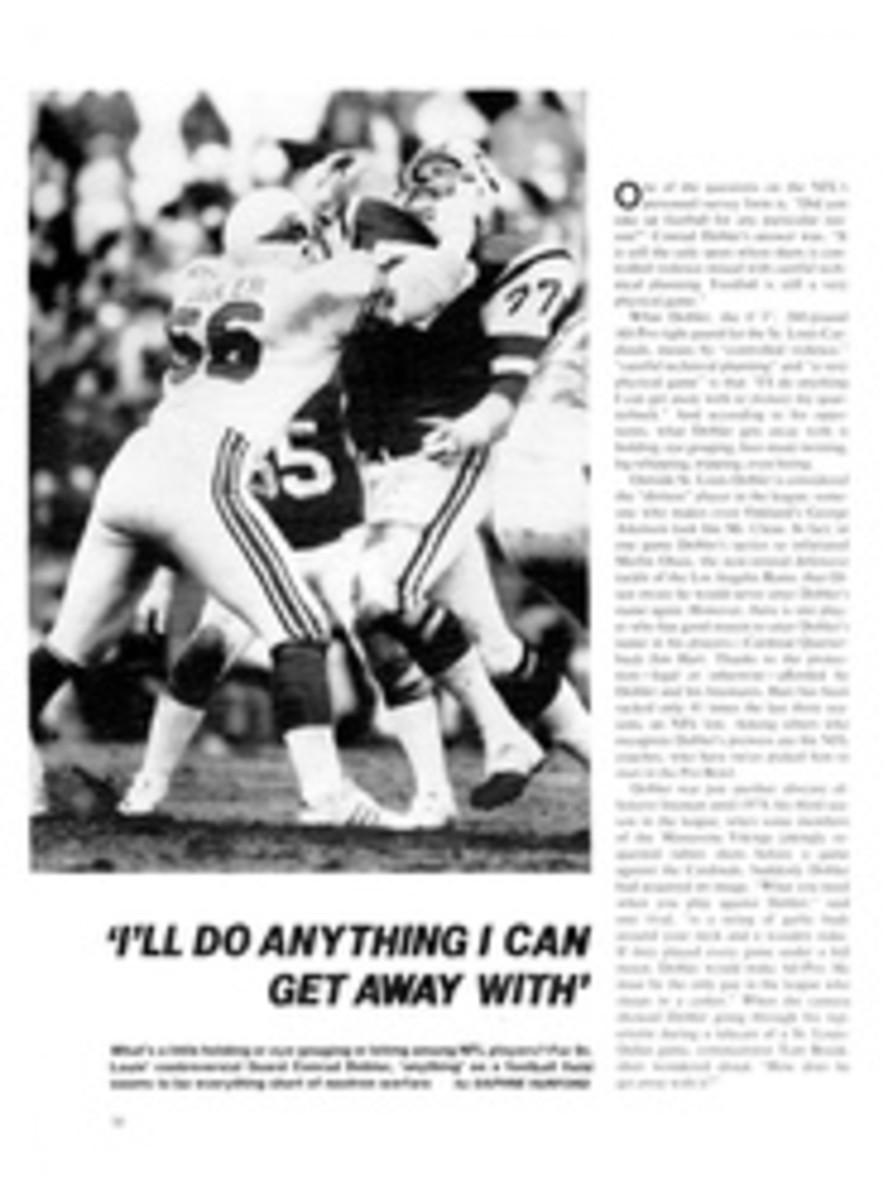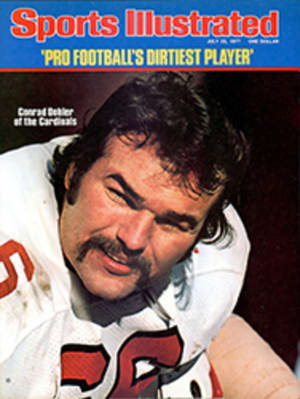
Beat feet but eyes right
Before a game in Baltimore recently, American League All-Star Manager Billy Martin of New York called Ken Singleton aside and assured the Oriole right-fielder that he would be selected for this week's game. Singleton thanked him, proceeded to go 4 for 4 at the plate and, with his team trailing 7-5 in the bottom of the ninth, was removed for a pinch runner. Singleton, you see, is an All-Star with an asterisk. "His career will be marred by the fact that he runs like me," says Player-Coach Brooks Robinson.
When baseball ability was handed out, Ken Singleton received just about every advantage a major-leaguer could want. The 30-year-old Oriole was blessed with a strong arm, a sure glove and a productive, sometimes powerful bat from both sides of the plate. He also was given a pleasing face, an imposing 6'4", 213-pound body and an imperturbable disposition. Unfortunately, he was granted the speed of a turtle. The fleetness in the family apparently went to his brother Fred, a former Penn State hurdler who is now a high school track coach.
But slowness of foot has not prevented Singleton from serving as Baltimore's anchorman in the slambang American League East race. At the All-Star break the surprising Orioles were in first place, ahead of Boston and New York, and Singleton was fourth in the league in hitting with a .331 average. "He's the kind of hitter," says Manager Earl Weaver, "who can start a rally by getting on base or end one by driving in the winning run."
Twice this year the switch-hitting Singleton has won an extra-inning game with a single, and he shares the team lead in RBIs, but the ability to wangle his way on base is his particular knack. Usually batting third, Singleton has failed to reach first in only seven games this year and his overall on-base percentage is a rarefied .444. Part of the reason is his batting average (.423 against lefthanders. .291 against righties). In addition, his sharp eye for the strike zone helps account for around 80 bases on balls a year.
"Pitchers have to be careful with me," says Singleton, "because I have the size and strength to hit the ball out, but I also have such a good eye that they can't just nibble around the plate. My job is mainly to get on base and if they don't put the ball over, even if it's just barely inside or outside, I usually won't swing."
There was a time earlier this year, however, when his eyes were a serious problem. The trouble began in late April, and several days passed before it was correctly diagnosed as an inflamed cornea. Further delay, Singleton learned, could have resulted in his losing his sight altogether. But with proper treatment he missed only nine games.
Those dependable eyes more than compensate for his undependable legs, which have accounted for only 18 steals in 48 career attempts. "I could steal a lot of bases if I had good speed," he says. "And it usually takes two hits to score me from first. I know this prevents me from being a complete player, but I don't let it bother me."
Very little, in fact, seems to get under Singleton's skin. He is so quiet and well-mannered that Weaver calls him a "gentleman," an uncommon locker-room tribute. On the field he accepts bad calls with equanimity, having been thrown out of only one game in his career. "There's always another at bat," he reasons.
Although Singleton has hit .300 twice before (.302 with Montreal in 1973 and .300 with Baltimore in '75), this is the first time he has done it by swinging better from the right side than the left. Last season he was .224 righty, .297 lefty. "Technically I believe I'm a better hitter right-handed because I can adjust to an inside or outside pitch better." he says, "but experience has made me more effective left-handed. I don't know why my right-handed average has suddenly gone way up. Now I have a different kind of problem. I'm around .300 again against righthanders and now that's bringing me down. But it's a problem I don't mind putting up with."
Singleton's career as a switch hitter began when he was a kid playing stick-ball in Mount Vernon, N.Y. Even though the Yankees played in the nearby Bronx and his house had previously belonged to the family of Brooklyn Pitcher Ralph Branca, he was a confirmed Giants rooter. "Supporting the Yankees was front-running," he says. Although a natural lefthander, Singleton would emulate each man in the Giant lineup—batting right for Mays, left for McCovey, etc. One summer Singleton belied his name by hitting a ton of homers, about 300 of them, he recalls. "A homer was any ball that landed on top of the grocery store across Columbus Avenue," he says. "Of course, the pitcher had to get it back."
Later, Singleton played in a local league against the older Rod Carew and signed with the Mets after his freshman year at Hofstra University. It was not until he and two teammates were traded to Montreal for Rusty Staub in 1972 that he became a regular. Success was further delayed until he overcame a debilitating allergy to wool, particularly the wool in the Expos' uniform. No sooner did Singleton slip into a set of specially made doubleknits than he became a terror at the plate, raising his average from .245 to .274 and the next year leading the Expos in hitting and homers (23) and the National League in on-base percentage (.429). "I was a nemesis," he says. After dropping to .276 in 1974 Singleton was traded to Baltimore, where he immediately became the Most Valuable Oriole, leading the team in batting, runs, hits, doubles and walks.
Singleton has continued to make his off-season home in Canada, spending the winter "trying to keep warm." This fall he will finally get some relief since he is moving with his French-Canadian wife Colette and son Matthew to Southern California.
Baltimore, though, is where he will remain as a player. After leading the Orioles in hitting for the second straight season last summer, he signed a five-year contract, the longest ever offered by the front office.
It did not take Singleton long to start earning his money. He went above .300 in the ninth game of the year and now threatens to break the modern Oriole record of .322 set 21 years ago by Bob Nieman. Singleton should succeed, especially since he is considered an even better hitter after the All-Star break. But don't expect him to set any speed records along the way.
PHOTO

